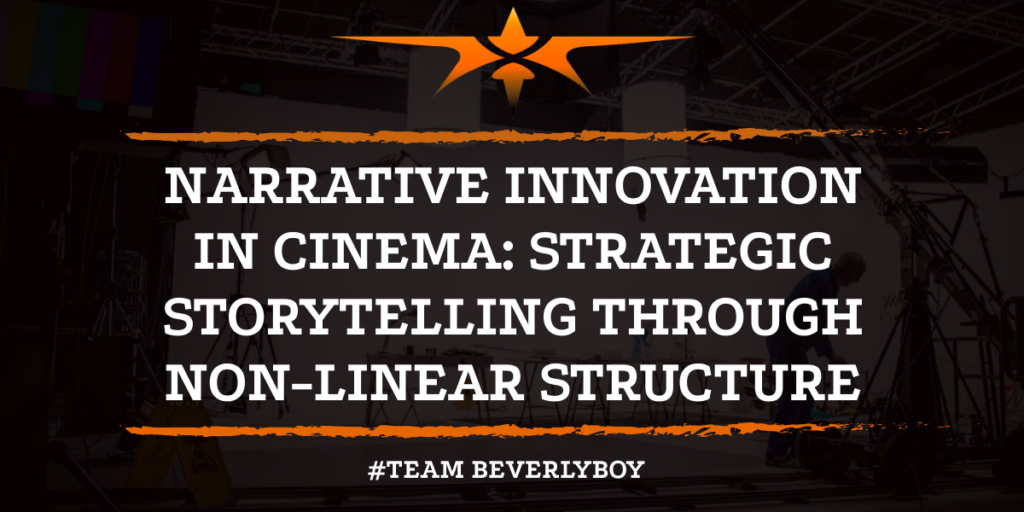NARRATIVE INNOVATION IN CINEMA: STRATEGIC STORYTELLING THROUGH NON-LINEAR STRUCTURE
Traditional storytelling in film usually unfolds in a linear manner, carrying you from a clearly defined beginning to a logical conclusion. With narrative innovation in cinema, especially through the use of non-linear structures, filmmakers disrupt this sequence by blending timelines, intertwining subplots, and shifting points of view. This strategic approach draws you into the story, requiring you to pay attention and piece together the narrative as it progresses. Instead of just observing, you actively participate in constructing the movie’s meaning, as non-linear storytelling transforms a passive viewing experience into one that is far more engaging and memorable.
To distinguish non-linear storytelling from familiar chronological narratives, consider its unique structure: events are presented out of order, and scenes may overlap in surprising ways. For example, films like “Citizen Kane” and “Rashomon” show how multiple perspectives and timelines offer a depth and complexity that linear plots rarely match. When you watch these films, you’re invited to jump across time, witness different character viewpoints, and gradually uncover the broader picture. This forces you to assemble connections, form hypotheses, and sometimes even question earlier assumptions about the story and its characters. Through this process, narrative innovation opens up greater possibilities for interpretation and emotional impact.
THE IMPACT OF NON-LINEAR STRUCTURES ON CHARACTER AND THEMES
Strategic use of a non-linear structure shapes both the thematic resonance and the development of character arcs. By revealing background details and critical events at unexpected moments, filmmakers keep your attention focused and heighten suspense throughout the viewing experience. This approach is especially effective in stories with multiple, deeply interwoven plots and shifting viewpoints.
Non-linear narratives make it possible to portray relationships and conflicts with nuance, giving you space to reshape your opinions as new information comes to light. You may find yourself reconsidering your initial judgments as the narrative folds in on itself, each plot layer exposing hidden motives or emotions. Ultimately, these storytelling methods foster a stronger emotional connection to the film’s characters and invite you to engage with the unfolding drama on a more personal, intellectual level.
ICONIC FILMS AND TECHNIQUES

Several iconic films demonstrate the power of narrative innovation through non-linear storytelling. Quentin Tarantino’s “Pulp Fiction” stands out for weaving together separate storylines, challenging your expectations, and keeping you alert with unexpected transitions. Christopher Nolan’s “Memento” uses reverse chronology to blur the lines between memory and reality, making you feel the protagonist’s disorientation and suspense as you try to reconstruct the plot. Michel Gondry’s “Eternal Sunshine of the Spotless Mind” employs fragmented timelines to visually represent the complexities of memory and heartbreak, mirroring the fractured emotional state of the characters. By integrating inventive pacing and structure, these films not only captivate you but also earn critical acclaim for their bold narrative choices.
Across these examples, filmmakers rely on a variety of tactics to manage the complexity and maintain coherence in their stories. You might notice the use of flashbacks, flashforwards, and rapidly alternating storylines, all connected through clever editing and scriptwriting. The technical artistry, including detailed visual cues and purposeful transitions, ensures that you never feel lost, even as timelines diverge and intersect. These methods keep you involved, turning what could be a confusing experience into a rewarding and satisfying narrative puzzle.
TOOLS FOR CLARITY IN NON-LINEAR FILMS
To create a successful non-linear narrative, filmmakers must balance innovation with clarity. They often use several storytelling tools to help you follow along:
– Flashbacks that reveal essential background information at key moments
– Flashforwards hinting at future events to build intrigue
– Overlapping storylines from different character viewpoints
– Both subtle and obvious visual cues to orient you in time and place
– Editing techniques that establish patterns, signaling narrative shifts
These strategies ensure that you can navigate unexpected turns and maintain your investment in the story, even when scenes are intentionally disjointed.
CHALLENGES AND CONSIDERATIONS
Despite its many strengths, non-linear storytelling isn’t without its challenges. If the plot becomes overly complicated or lacks clear narrative signposts, you might feel confused or disconnected from the story’s core message. Filmmakers must carefully consider how much complexity and ambiguity you can reasonably handle without losing your interest. Achieving the right balance between artistic ambition and narrative accessibility is key to ensuring you remain engaged and emotionally invested. Thoughtful use of non-linear structure sparks discussion and analysis, deepening your appreciation for the film’s underlying themes and character motivations.
THE FUTURE OF NARRATIVE INNOVATION
Looking ahead, the evolution of digital and interactive technologies is poised to expand the possibilities for non-linear narrative innovation in cinema. Online platforms, streaming services, and even video games are reshaping how stories are delivered, sometimes giving you control over the sequence in which you experience different plotlines. As these platforms become more interactive, you’re likely to encounter more movies and series that allow you to choose which segments to watch and in what order, personalizing your experience. These emerging tools not only challenge filmmakers to approach storytelling with new strategies but also invite you to engage with narratives in unprecedented ways. With the ongoing advancement of technology, the future of cinematic storytelling may become even more diverse, immersive, and participatory.
NON-LINEAR NARRATIVES: THE NEXT CHAPTER
As you seek out richer and more complex films, non-linear storytelling offers a refreshing departure from predictable, formulaic plots. This narrative innovation enables filmmakers to craft movies that are both intellectually stimulating and emotionally compelling, rewarding you for your active engagement as the story unfolds. As the techniques continue to evolve, you can expect even more unique and immersive experiences that expand the possibilities for film as an art form. Non-linear structures not only enhance your understanding of storytelling but also elevate your appreciation for the creativity behind each film. The new wave of narrative innovation invites you to think critically, feel deeply, and embrace the infinite styles of cinematic storytelling.


